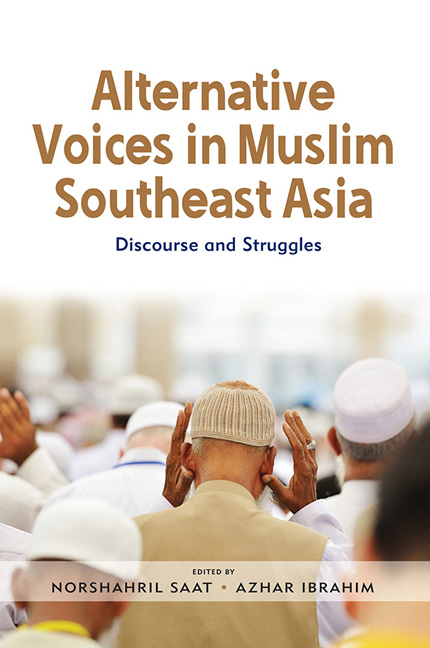1 - The Politics of Islamic Discourse in Malaysia
Published online by Cambridge University Press: 02 April 2020
Summary
In 1987, academic and political observer Chandra Muzaffar published a seminal work, Islamic Resurgence in Malaysia, analysing the rise of religiosity in Malaysian society and its impact on Malaysian social, economic and political life. The community's outlook was undergoing change: more urban dwellers wanted to be in touch with religious values, and this meant embracing conservative teachings. Chandra defined Islamic resurgence to mean “the endeavour to establish Islamic values, Islamic practices, Islamic institutions, Islamic laws, indeed Islam in its entirety, in the lives of Muslims everywhere. It is an attempt to re-create an Islamic ethos, an Islamic social order, at the vortex of which is the Islamic human being, guided by the Quran and Sunnah.” The causes were multifold. Malaysia was undergoing political and economic changes with Mahathir Mohamad taking over as the country's prime minister in 1981. The country was also undergoing rapid urbanization and industrialization, and those from the working class sought to strengthen their religious values so that they could have some form of spirituality to fall back on. Second, international events that seemingly oppressed the Islamic world—such as Arab wars, the Palestinian issue and the Soviet invasion of Afghanistan in 1979—led to Malaysian Muslims wanting to be part of the global ummah and to stand up against imperialists. Islamist literature is used to strengthen anti-colonial sentiments. The Iranian revolution of 1979 was also significant because it inspired many Muslims to believe the leadership of the ulama (Islamic religious elites) could generate social change. The Iranian revolution sparked interest in many Islamic societies, including Malaysia, because they saw Islam as a force to unite fragmented societies against the West and oppression. This also meant the ulama could lead a revolution and provide the necessary leadership to mitigate their hardships.
In the 1980s and 1990s, Islamic institutions were built and expanded. While the Malaysian government intended to out-Islamize PAS (Islamic Party of Malaysia)—which was also undergoing reforms after infighting in the 1970s—some of these institutions supported Mahathir's procapitalistic, industrialization and development models. It was during this period that the state began to support Islamic finance, banking and the halal economy.
The discourse promoted by the Muslim resurgence glosses over past cleavages between the traditionalists and modernists. For centuries the two camps have not been able to settle differences over rituals.
- Type
- Chapter
- Information
- Alternative Voices in Muslim Southeast AsiaDiscourse and Struggles, pp. 3 - 8Publisher: ISEAS–Yusof Ishak InstitutePrint publication year: 2019

